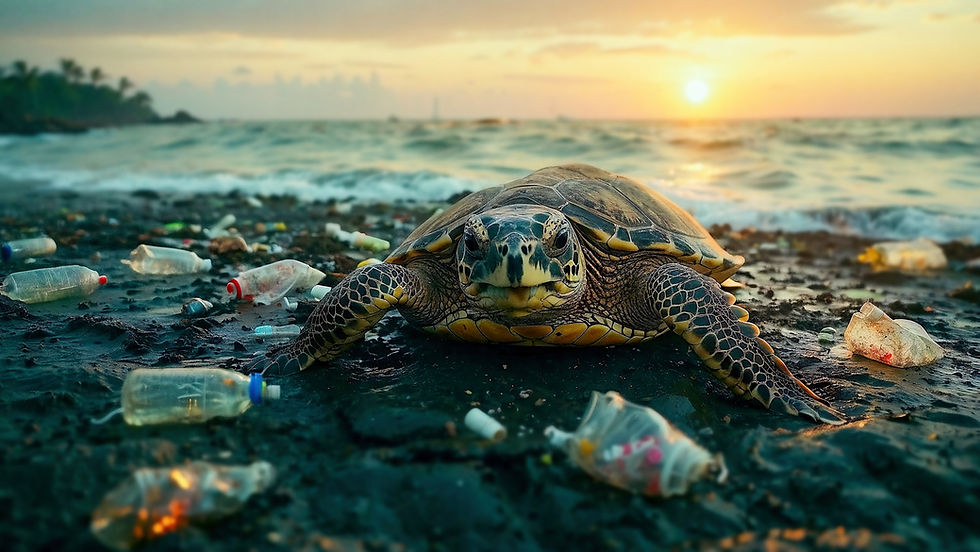
John Hawley
Aug 4, 2025
Researchers at Washington University in St. Louis have developed LEAFF, a leaf-inspired bioplastic that is stronger than petroleum-based plastics, degrades at room temperature, and offers improved food protection. By using agricultural feedstocks and even waste streams, this innovation could help build a circular economy that reduces plastic pollution while creating new markets for sustainable farming.
For decades, society has battled the environmental toll of petroleum-based plastics. From oceans thick with plastic debris to the unsettling discovery of microplastics in our food and drinking water, the evidence is mounting: we need better alternatives. The push toward biodegradable plastics, or “bioplastics,” has been one promising path.
But here’s the reality — most current bioplastics fall short. They’re often weaker than traditional plastics, and many only break down in specialized high-temperature composting facilities. In the real world, they can linger almost as long as their petroleum cousins.
From the Forest Floor to the Lab: Learning from Leaves
A team at Washington University in St. Louis has taken a fresh approach, inspired by a humble yet powerful natural material — the leaf. For centuries, humans wrapped food in leaves, relying on their strong, flexible, and biodegradable structure. The secret lies in cellulose-rich cell walls, nature’s own packaging material.
Led by Joshua Yuan, professor of energy, environmental, and chemical engineering and director of the NSF-funded Carbon Utilization Redesign for Biomanufacturing (CURB) Center, the researchers mimicked this structure in a new bioplastic design. They layered cellulose nanofibers between sheets of common bioplastics, creating a composite they call LEAFF — Layered, Ecological, Advanced, and multi-Functional Film.
The result?
Stronger than petrochemical plastics like polyethylene and polypropylene.
Biodegrades at room temperature, avoiding the need for industrial composting.
Protects food better thanks to low air and water permeability.
Cuts costs by offering a printable surface for packaging, eliminating separate labels.
Closing the Loop: Toward a Circular Economy
What makes this especially exciting for sustainable agriculture is the potential to link farm production, waste management, and manufacturing in a true circular economy. The U.S., with its vast agricultural capacity, is uniquely positioned to lead this shift.
Feedstocks for bioplastic production — such as lactic acid, acetate, and fatty acids — can be produced from corn, starch, and other crops. Even better, microbial workhorses like Pseudomonas putida can convert waste streams — including carbon dioxide, lignin, and food waste — into valuable bioplastic materials.
By combining waste-to-bioplastic fermentation with the improved LEAFF design, we could:
Reduce reliance on petroleum.
Cut plastic pollution and microplastic contamination.
Create new economic opportunities for farmers and rural communities.
Why It Matters for Sustainable Agriculture and the Environment
Agriculture is not just a source of food — it can be a source of climate solutions. The same systems that grow our crops could also supply biodegradable, high-performance packaging. And if that packaging naturally degrades without polluting soil or water, it closes one of the biggest environmental loops in the modern economy.
The WashU research is just one example of how biomimicry — looking to nature for design inspiration — can unlock technologies that meet human needs without sacrificing planetary health. Other innovations, from mycelium-based building materials to seaweed-derived packaging, are part of this same wave of regenerative design.
Looking Ahead
Yuan and his team are now seeking industry and philanthropic partners to scale LEAFF for commercial production. While competition is heating up globally, U.S. producers have a clear edge thanks to their access to low-cost agricultural feedstocks. If adopted widely, this technology could transform the $23.5 billion plastic packaging market into one that works with nature rather than against it.
Plastic pollution is one of the defining environmental challenges of our time. But with agricultural innovation, microbial engineering, and a little inspiration from the leaf, we may be closer than ever to a solution that keeps our food fresh, our soil healthy, and our water clean.

